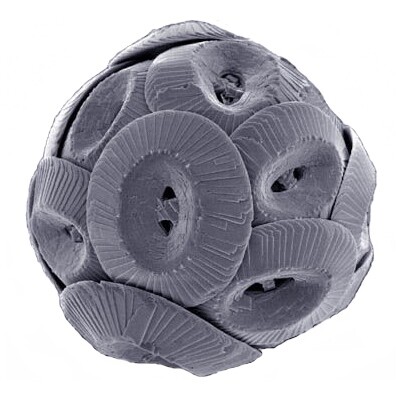TUCSON, Ariz. (KGUN) — University of Arizona researchers are trying to tackle the massive challenge of climate change with something small: algae.
Specifically, they are focusing on one type of microalgae called coccolithophores.
Daniel Apai—a UArizona professor of Astronomy & Planetary Science—spends time studying the potential for life on other planets. In order to do so, he studies the unique factors that make life on Earth possible.
His work led him to the natural processes of how coccolithophores in Earth’s oceans remove carbon from the atmosphere.
He hopes to be able to harness that natural process on a grand scale to remove carbon emissions from the atmosphere—something he says can be done more efficiently through the microalgae, which grows faster than trees.
Apai says that even if the world’s industries cut carbon emissions significantly, planes and cargo ships would still need to run on fossil fuels and do not have the technology to be powered by batteries. He estimates they would still emit at least 5 billion tons of carbon dioxide each year over the next few decades.
“Over the past hundreds of millions of years, these micro-algae have been an important part of the carbon cycle on the Earth,” Apai said. “They have been extracting carbon dioxide from the ocean and transforming it into calcium carbonate shells, with which they kind of protect themselves. It’s like little shields around these unicellular organisms.”
Joel Cuello, a UArizona professor of Biosystems Engineering, joined Apai’s project last summer. He designs photobioreactors for growing microalgae on a large scale.
“That’s the aim here... to mass propagate the cells so you can really remove a significant amount of carbon from the atmosphere,” he explained. “And you’re [going to] be producing these plates, which are calcium carbonate, and that can be used as construction material [in order to] make this economically viable and feasible... That’s very important. Because if it’s not, then removing [carbon] by this means is not [going to] be sustainable economically.”

To that economic end, Cuello also says the algae biomass itself could potentially be used as fertilizer or human nutraceuticals.
PhD student Jack Welchert cultures, or manages the growth of, different coccolithophores to optimize their growth rates.
“Every species, strain we get grows at a different rate,” he said. “So it’s all dependent on light intensity, temperature, nutrient considerations and where these cells originated from.”
The coccolithophores started in small flasks in a laboratory on campus about one month ago. The goal is to eventually mass-produce them in large bioreactors designed by Cuello.
“We need to hurry up. We don’t have—the planet doesn’t have much time,” said. Martin Schlecker, a postdoctorate astronomy researcher who is part of the team. “We know that the process works, but we need to scale it up.”
The team’s target is to remove 1,000 tons of carbon dioxide from the atmosphere within the next four years.
“But we need to scale this up by a further factor of thousand to have an actual impact that has any effect,” Schlecker added.
Right now Apai’s team—known as Atmospherica—includes only a handful of researchers.
But like the algae, they hope to keep growing — both in people and funding.
——-
Ryan Fish is an anchor and reporter for KGUN 9 and comes to the Sonoran Desert from California’s Central Coast after working as a reporter, sports anchor and weather forecaster in Santa Barbara. Ryan grew up in the Chicago suburbs, frequently visiting family in Tucson. Share your story ideas and important issues with Ryan by emailing ryan.fish@kgun9.com or by connecting on Facebook and Twitter.
Photo of coccolithus pelagicus seen in video courtesy of Richard Lampitt, Jeremy Young, The Natural History Museum, London, CC BY 2.5 , via Wikimedia Commons





